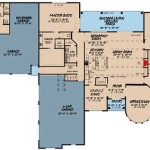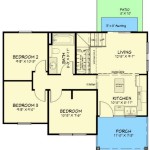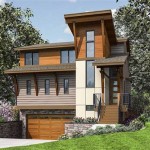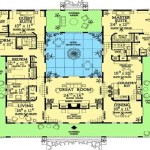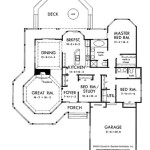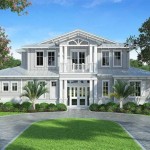Exploring Southern Plantation Style Home Plans
Southern plantation style home plans evoke a sense of history, grandeur, and timeless elegance. Characterized by their symmetrical facades, expansive porches, and stately columns, these homes offer a distinct architectural statement. While the historical context of plantations must be acknowledged and understood, the architectural style itself has been adapted and reinterpreted for modern living, focusing on the aesthetic and functional aspects rather than the problematic associations of the past.
Modern interpretations emphasize spacious interiors, abundant natural light, and a seamless integration of indoor and outdoor living. The following sections delve into the key features, considerations, and adaptation strategies associated with Southern plantation style home plans.
Key Architectural Features and Distinguishing Characteristics
Southern plantation style homes are easily recognized by their specific architectural elements. These details not only contribute to the overall aesthetic but also reflect the practical needs and climate considerations of the region where the style originated.
A prominent feature is the
grand front porch
, often wrapping around the entire house. This generous space provides shade and a place for outdoor relaxation, a necessity in the warm Southern climate. The porches are typically supported by large, classically inspired columns, adding to the home's imposing appearance. These columns are often Doric, Ionic, or Corinthian, each style offering a distinct visual appeal.Symmetry
is another defining characteristic. The facade is usually perfectly balanced, with a central entrance flanked by matching windows and wings on either side. This symmetrical design extends to the interior layout, creating a sense of order and harmony.Large, multi-paned windows
are common, allowing ample natural light to flood the interior. These windows are often adorned with shutters, which serve both a functional purpose – controlling light and airflow – and an aesthetic one, enhancing the architectural detail.High ceilings
are another hallmark of the style, contributing to a sense of spaciousness and grandeur. High ceilings also help to regulate temperature, keeping the house cooler in the summer months. The interior layout typically includes generously sized rooms, designed for entertaining and comfortable living.Gable roofs
are commonly used, often with dormers that add visual interest and provide additional light to the upper floors. The roof is typically clad in shingles or metal, depending on the desired aesthetic and budget.Exterior materials
often include white painted brick, clapboard siding, or stucco, creating a bright and airy appearance. The choice of materials can be adapted to suit the local climate and personal preferences.Adapting the Style for Modern Living
While retaining the core architectural elements, Southern plantation style home plans can be adapted to suit the needs and preferences of modern homeowners. This involves incorporating contemporary features and technologies while preserving the historical character.
Open floor plans
are a popular adaptation, creating a more informal and connected living space. While traditional plantation homes often featured separate rooms for different functions, modern homeowners often prefer a more open layout that allows for seamless flow between the kitchen, living room, and dining area.Modern kitchens and bathrooms
are essential for contemporary living. These spaces can be designed with high-end appliances, custom cabinetry, and luxurious finishes while still complementing the overall aesthetic of the house. The use of natural stone, elegant tile, and high-quality fixtures can enhance the sense of luxury and sophistication.Energy efficiency
is another important consideration. Modern Southern plantation style homes can be designed with energy-efficient windows, insulation, and HVAC systems to reduce energy consumption and lower utility bills. Solar panels and other renewable energy technologies can also be integrated into the design.Smart home technology
can be seamlessly integrated into the home, providing convenience and control over lighting, temperature, security, and entertainment systems. Discreetly placed wiring and hidden technology can ensure that the modern features do not detract from the historical character of the house.Outdoor living spaces
can be expanded beyond the traditional front porch. Patios, decks, and outdoor kitchens can be added to create additional areas for entertaining and relaxation. Landscaping plays an important role in enhancing the overall aesthetic, with manicured lawns, flowering shrubs, and mature trees contributing to the sense of grandeur and elegance.Interior design
can blend traditional and contemporary elements. Antique furniture, classic artwork, and elegant fabrics can be combined with modern lighting, minimalist décor, and comfortable seating to create a stylish and inviting living space. The use of neutral colors, such as white, cream, and beige, can create a sense of calm and sophistication.Accessibility considerations
can be incorporated into the design to ensure that the home is accessible to people of all ages and abilities. Ramps, elevators, and wider doorways can be integrated into the design without compromising the architectural integrity of the house.Considerations for Choosing and Implementing a Southern Plantation Style Home Plan
Choosing a Southern plantation style home plan requires careful consideration of various factors, including budget, site conditions, and local building codes. A thorough assessment of these factors is essential to ensure a successful project.
Budget:
Southern plantation style homes are typically more expensive to build than simpler designs due to the intricate detailing, high-quality materials, and larger square footage. It is important to establish a realistic budget and to work with a builder who has experience in constructing this type of home. The cost of materials, labor, and landscaping should all be factored into the budget.Site conditions:
The size and shape of the building site will influence the design of the home. A large, flat site is ideal for a traditional plantation style home, but the style can also be adapted to more challenging sites. Soil conditions, drainage, and access to utilities should all be considered.Local building codes and regulations:
It is essential to comply with all local building codes and regulations, including zoning ordinances, setback requirements, and environmental regulations. Obtaining the necessary permits and approvals can be a time-consuming process, so it is important to start early.Architect and builder selection:
Choosing an experienced architect and builder is crucial for a successful project. The architect should have a thorough understanding of Southern plantation style architecture and be able to create a design that meets the homeowner's needs and preferences. The builder should have a proven track record of constructing high-quality homes and be familiar with the specific challenges of building this type of home.Sustainability considerations:
While historically not a primary concern, modern construction should prioritize sustainability. Using locally sourced materials, implementing water conservation measures, and incorporating energy-efficient technologies can reduce the environmental impact of the home. Consider using reclaimed materials where appropriate, such as antique wood flooring or salvaged brick.Long-term maintenance:
Southern plantation style homes require regular maintenance to preserve their beauty and value. This includes painting, cleaning, and repairing any damage to the exterior or interior. It is important to factor in the cost of long-term maintenance when making decisions about materials and design.Historical accuracy vs. modern convenience:
A balance must be struck between maintaining historical accuracy and incorporating modern conveniences. While some homeowners may prefer to adhere strictly to historical details, others may be more willing to compromise in order to enjoy the benefits of modern technology and design. It is important to have a clear understanding of one's priorities before starting the project.Landscaping and outdoor spaces:
The landscaping and outdoor spaces are an integral part of the overall design. Manicured lawns, flowering gardens, and mature trees can enhance the sense of grandeur and elegance. Consider adding features such as a swimming pool, tennis court, or outdoor kitchen to create a resort-like atmosphere.By carefully considering these factors, homeowners can create a Southern plantation style home that is both beautiful and functional, a testament to enduring architectural style.

Southern Home Plans Plantation Style Wrap Around Porch

5 Bedrm 7433 Sq Ft Southern Plantation House Plan 153 1187

Plantation House Plans Deep South Style Home Floor

Southern Home Plans Plantation Style Wrap Around Porch

Plantation House Plans Deep South Style Home Floor

5 Bedrm 7433 Sq Ft Southern Plantation House Plan 153 1187

House Plan 73702 Southern Style With 3653 Sq Ft 5 Bed 4 Bath

Classical Style House Plan 5 Beds 6 Baths 10735 Sq Ft 137 211 Southern Plans Colonial Plantation

Plan 82641 Southern Style With 3 Bed Bath

Southern Style With 3 Bed 4 Bath 2 Car Garage Plantation House Plans Country


